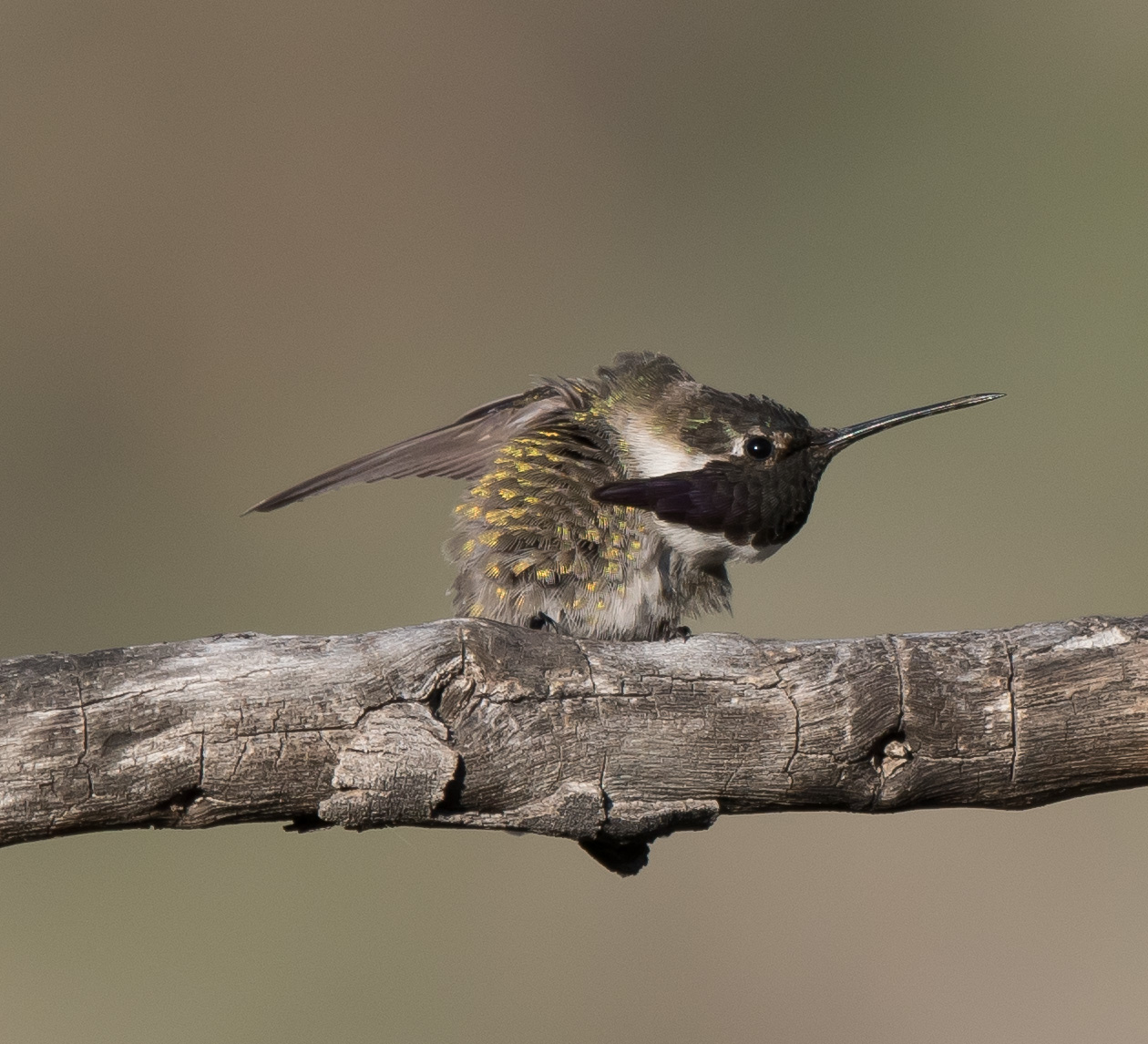The 8 days of the trip to Oregon/Washington were filled with RAIN! It rained every day during our stay and at one brief moment in the state of Washington, we did see a few snow flurries, but nothing to cause any road condition problems. Only once did we encounter a MONDAY, but it was a special MONDAY as I picked up 2 new life birds that day. The first was the Gray Partridge (see previous post) and the second lifer was one that has been on my wish list for a few years, the Short-eared Owl. This owl is one that is rather difficult to get in Arizona although they are reported from time to time in the winter months. We arrived at the location that Khanh knew about at dusk and, of course it was RAINING! I got my binoculars on it quickly and confirmed the ID and was happy. Had to bump up the ISO on the camera since it was so dark, which allowed me to get some photos of this cool owl. I now have only 2 species of owls left to see in the list of North American owls; one is pretty easy in the right range and the other is one of the hardest to find.
Short-eared Owl
A couple more lifers that I added to my life list on this trip were found in Washington. They were the Bohemian Waxwing and the White-headed Woodpecker. The Bohemian Waxwing is a cousin to the Cedar Waxwing that we see quite frequently in Arizona, but it is a bit larger and grayer overall with a dark red vent area. They are very nomadic and can be hard to find as they travel a lot, in search of food sources. Luckily we stumbled on to a flock of about 200.
Bohemian Waxwing
The White-headed Woodpecker has been on my wish list for a long time and I know they can be found a few hours away in California, but I had never taken the time to pursue them in their habitat. We had a stunningly beautiful female show herself to us. The white head on a coal black back and body is very striking.
White-headed Woodpecker
A couple other lifers that I acquired in the Pacific Northwest were the Gray-crowned Rosy Finch and the American Tree Sparrow. The Rosy Finches were using some of last year's Cliff Swallow nests for roosting at night. Who said birds are not smart? We got there at twilight just as they were going to roost and had to use our flash to get photos. Not great for photography and I usually despise using a flash and try to avoid it at all costs.
Gray-crowned Rosy Finch
The American Tree Sparrow was one of the hardest birds to get for my satisfaction. They did not cooperate by any means. We had heard them in a few spots and I caught glimpses of them, but not enough to confirm the key field marks for an ID. Finally at one stop, I got some good looks, but photos were not meant to be. They really played hide-and-seek with me. The photo below is the best I could get and one has to really look hard to see that there is a bird in the background behind all those branches.
American Tree Sparrow - Yes, it is in there!
Other birds that I was able to get photos of included Rough-legged Hawk; one I have never photographed before. And a female American Three-toed Woodpecker.
Rough-legged Hawk
American Three-toed Woodpecker - Female
Even some of the birds that are found in this area are the same species as those found in Arizona, but some of them can look quite different. The next 4 photos are examples of these birds.
Horned Lark (Western Rufous Group)
Gray Jay - 2 different subspecies in the northwest
Gray Jay - 2 different subspecies in the northwest
Spotted Towhee - less spots and its call was a bit different as well.
Even though it was RAINY and we only had one MONDAY, we still got to see some great birds. Will have one more post to cover this expedition, so you can look forward to it in the future.



































































